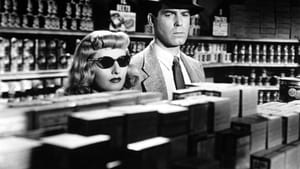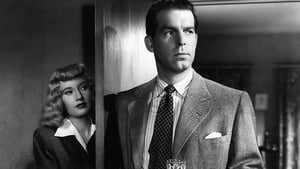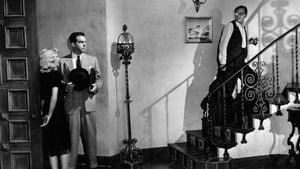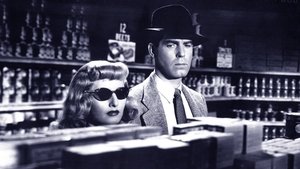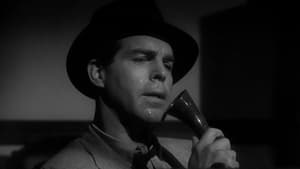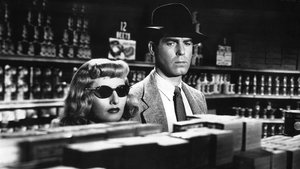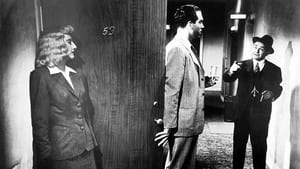Contact: [email protected]
Video Sources 0 Views
- Double Indemnity Colorized


Synopsis
[ez-toc]




Introduction
In the ever-evolving world of cinema, where technology continually breathes new life into old films, the colorization of classic movies has sparked both fascination and controversy. One such iconic film that has undergone this transformative process is the timeless noir masterpiece, “Double Indemnity Colorized.” Originally released in 1944, this film noir gem by director Billy Wilder and writer Raymond Chandler has been resurrected in a new light – quite literally – through the Double Indemnity Colorized 1944 edition. In this article, we delve into the significance of colorization in preserving and revitalizing old movies, focusing on the classic Double Indemnity. We acknowledge the ongoing debate around colorization and explore why Double Indemnity Colorized was chosen for this unique treatment.
Read Media File Transfer Agreement: Terms and Conditions
Read FAQ
The Making of a Masterpiece
Before we plunge into the colorful rendition of Double Indemnity Colorized, it’s essential to understand the roots of this cinematic gem. The original Double Indemnity Colorized(1944) stands as a pioneering example of film noir, a genre characterized by its dark themes, stark visuals, and morally ambiguous protagonists. The collaborative genius of director Billy Wilder and writer Raymond Chandler birthed a narrative that would go on to shape the noir landscape.
Wilder, known for his keen storytelling and Chandler, celebrated for his hard-boiled detective novels, crafted a gripping tale of crime, passion, and betrayal. Double Indemnity Colorized follows the ill-fated alliance between insurance salesman Walter Neff, played by Fred MacMurray, and the seductive Phyllis Dietrichson, portrayed by the enigmatic Barbara Stanwyck. Edward G. Robinson adds another layer of intrigue as Barton Keyes, the tenacious claims adjuster.
The film’s impact on the noir genre is immeasurable. It set a benchmark for shadowy cinematography, complex characters, and a narrative structure that would become emblematic of film noir storytelling.
A Cinematic Crime Unfolds: Plot Summary and Analysis
As the plot unfolds, we witness the entanglement of Walter Neff and Phyllis Dietrichson in a web of deceit, betrayal, and murder. The duo conspires to execute the perfect crime: a murder staged as an accident to claim the double indemnity clause in an insurance policy. The film’s narrative is a labyrinth of suspense and moral ambiguity, with Edward G. Robinson’s Barton Keyes relentlessly pursuing the truth.
The key themes of betrayal, greed, and deception resonate throughout the film, painting a grim portrait of human nature. Double Indemnity’s narrative intricacies, coupled with its dark and evocative cinematography, have solidified its place in the annals of cinema history.
Bringing Characters to Life: Performances in Color
The colorized version of Double Indemnity breathes new life into the characters, offering audiences a fresh perspective on the film. Barbara Stanwyck’s portrayal of the femme fatale, Phyllis Dietrichson, is intensified with the addition of color. The subtleties of her expressions and the nuances of her performance become even more apparent, drawing viewers deeper into the web of deception.
Fred MacMurray’s Walter Neff gains a new dimension in color, with the visual richness adding complexity to his character. Edward G. Robinson’s Barton Keyes, in his pursuit of justice, exudes a vibrancy that complements the film’s heightened visual palette.
The artistry of the screenplay and dialogue takes center stage, with the colorization process emphasizing the emotional depth of the characters. The ensemble cast’s performances shine anew, offering viewers a captivating experience that pays homage to the original while embracing the possibilities of color.
The Enduring Legacy
Double Indemnity’s impact extends beyond its initial release. The film garnered critical acclaim and received seven Academy Award nominations, including Best Picture, Best Director, and Best Actress. While it didn’t secure any wins, its influence on the noir genre was undeniable.
The movie’s legacy is further solidified by its inclusion in the National Film Registry, a testament to its cultural, historical, and aesthetic significance. Double Indemnity’s enduring appeal lies in its ability to captivate audiences across generations, remaining a touchstone for filmmakers exploring the darker realms of storytelling.
Preserving Authenticity: The Debate over Colorization
The introduction of colorization to classic black-and-white films has been met with both enthusiasm and skepticism. Purists argue that the original artistic vision is compromised, while proponents see colorization as a means of introducing classics to new audiences. In the case of Double Indemnity Colorized 1944, the debate gains traction.
The colorization process involves digitally adding color to each frame, a meticulous and often contentious technique. Advocates argue that colorization can breathe new life into old films, making them more accessible to modern audiences. However, detractors question the artistic integrity of altering a film’s visual identity, contending that the director’s original intent is lost in the process.
Experiencing Double Indemnity Colorized: To Watch in Color or Black and White?
The question of whether to experience Double Indemnity Colorized in color or black and white becomes a matter of personal preference. Each version offers a unique lens through which to appreciate the film’s brilliance.
In black and white, Double Indemnity retains its noir essence, with shadows and contrasts playing a pivotal role in shaping the narrative. The monochromatic palette enhances the film’s atmosphere, emphasizing the moral ambiguity of its characters.
On the other hand, the colorized version introduces a visual richness that adds layers to the storytelling. The vibrancy of the performances and the heightened emotions become more pronounced, offering a fresh perspective to those familiar with the original.
Ultimately, the choice between color and black and white is subjective. Some may prefer the authenticity of the original, while others embrace the opportunity to see classic films through a new lens. It’s a delicate balance between preserving the past and embracing the future of cinematic storytelling.
The Timelessness of a Cinematic Masterpiece
In conclusion, Double Indemnity Colorized 1944 stands as a testament to the enduring appeal of classic films. The colorization process, while sparking debates about artistic integrity, succeeds in breathing new life into this noir masterpiece. Whether experienced in its original black-and-white form or through the vivid lens of color, Double Indemnity remains a cinematic triumph.
As we navigate the evolving landscape of film preservation, it’s crucial to appreciate the delicate balance between honoring the past and embracing the possibilities of the future. Double Indemnity Colorized 1944 invites audiences to reevaluate a classic through a different lens, sparking conversations about the role of colorization in preserving the authenticity of cinematic masterpieces. In the end, the timeless allure of Double Indemnity persists, beckoning cinephiles to explore its narrative complexities in both monochrome and vibrant hues.
